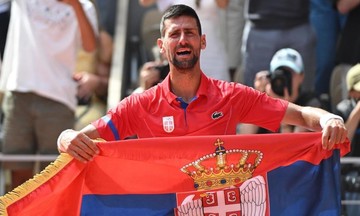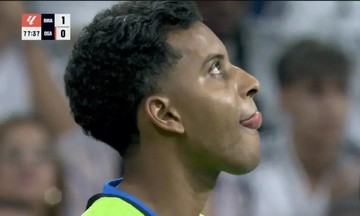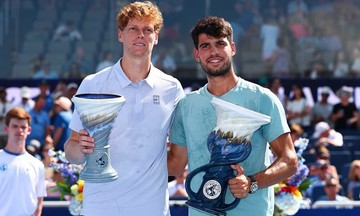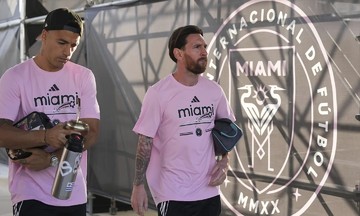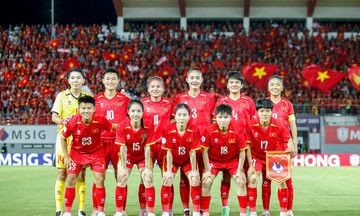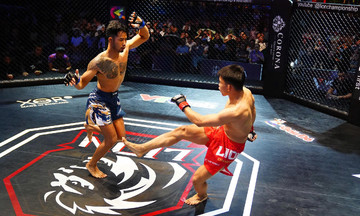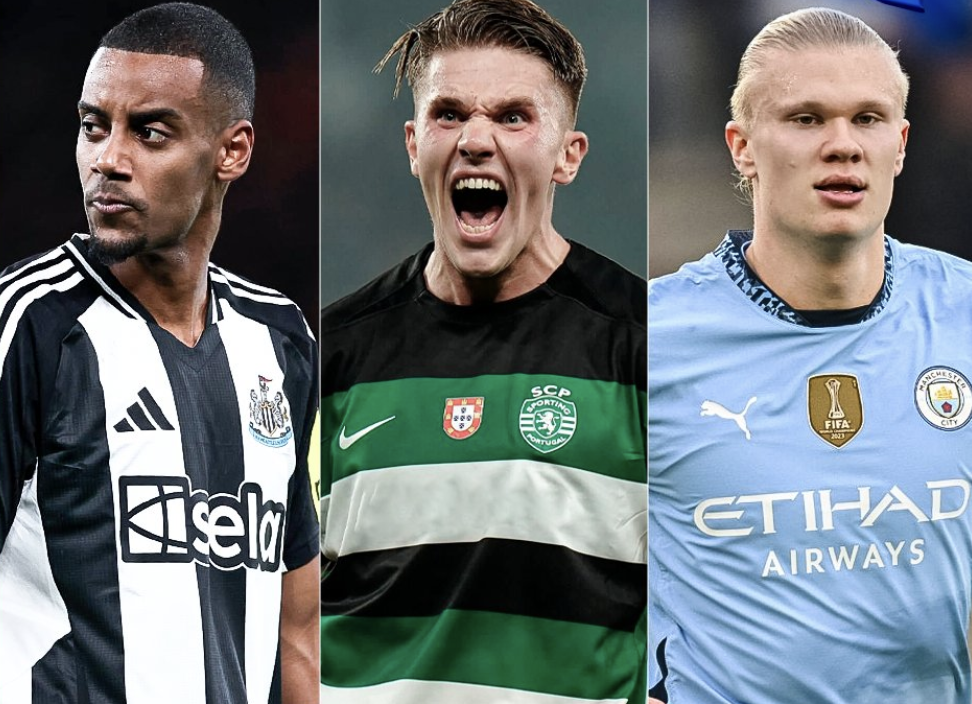 |
From left to right: Isak, Gyokeres, and Haaland - some of Europe's top strikers today. |
At a small sports complex in Vallingby, west of Stockholm, Sweden, Alexander Isak and Viktor Gyokeres first crossed paths. Back then, they were lean, inexperienced strikers - 16 and 17 years old, respectively - playing in the national U19 league on a chilly Saturday in 10/2015.
A small crowd witnessed Gyokeres' lesser-known team, Brommapojkarna, defeat Isak's more established hometown club, AIK. Their next encounter will be vastly different, with millions watching worldwide.
Gyokeres officially joined Arsenal. The 27-year-old forward transferred from Sporting Lisbon for a fee that could reach nearly 90 million USD, depending on performance-related add-ons.
As for Isak, Newcastle remains reluctant to sell, but the 25-year-old has expressed his desire to leave. According to The Times, Newcastle's asking price is no less than 200 million USD. If the deal goes through, the Isak-Gyokeres rematch could be an early season highlight when Arsenal visits Liverpool on 31/8 in the Premier League.
 |
Isak (left) and Gyokeres playing for the Swedish national team. |
Isak and Gyokeres were born 15 months apart in Stockholm and grew up 11 km apart in different suburbs. With English academies struggling to produce strikers, why is Scandinavian football experiencing such a contrasting boom?
Besides Sweden's Isak and Gyokeres, Norway boasts the established Erling Haaland, Wolves' rising star Jorgen Strand Larsen, and Alexander Sorloth, 29, who scored 26 and 24 goals in consecutive seasons for Villarreal and Atletico Madrid, respectively.
Denmark has Rasmus Hojlund, who hasn't yet met expectations at Man Utd, and other promising forwards. At last month's U21 European Championship, they showcased William Osula (Newcastle) and Conrad Harder (Sporting).
There's also the bright talent Chido Obi, 17, of Man Utd, who developed at Copenhagen before joining Arsenal's academy at 14. Obi has 36 youth caps for Denmark but is also eligible for England, with two U16 appearances.
"Why can’t we produce a No 9?", former player Theo Walcott recently asked, noting that Premier League academies are producing talented wingers and number 10s but few convincing center-forwards.
"It’s hard to find them because everyone wants to be predictable… cutting inside," Walcott added.
Walcott's view echoes Gus Poyet's observation last year that Premier League academies "only teach one way". Even at top clubs, players in every position do the same things—dribbling, passing in tight spaces, neat touches—but few are proactive, physical, or decisive. This might explain the lack of young center-backs, defensive midfielders, and number 9s.
Bryan King, a former Millwall goalkeeper and a legendary Scandinavian talent scout who brought Haaland to Everton for a trial at 16, said, "Why aren’t we producing big goalkeepers, center-halves, and center-forwards anymore? We used to be the best at it. But in Norway, Sweden, and Denmark, if you’re a goalscorer, they encourage you to stay at it. They allow a kid to be free like Haaland rather than telling them to come short, link play, and do other things".
"I think Scandinavians have more freedom in their training. They let young players express themselves from a young age," King added.
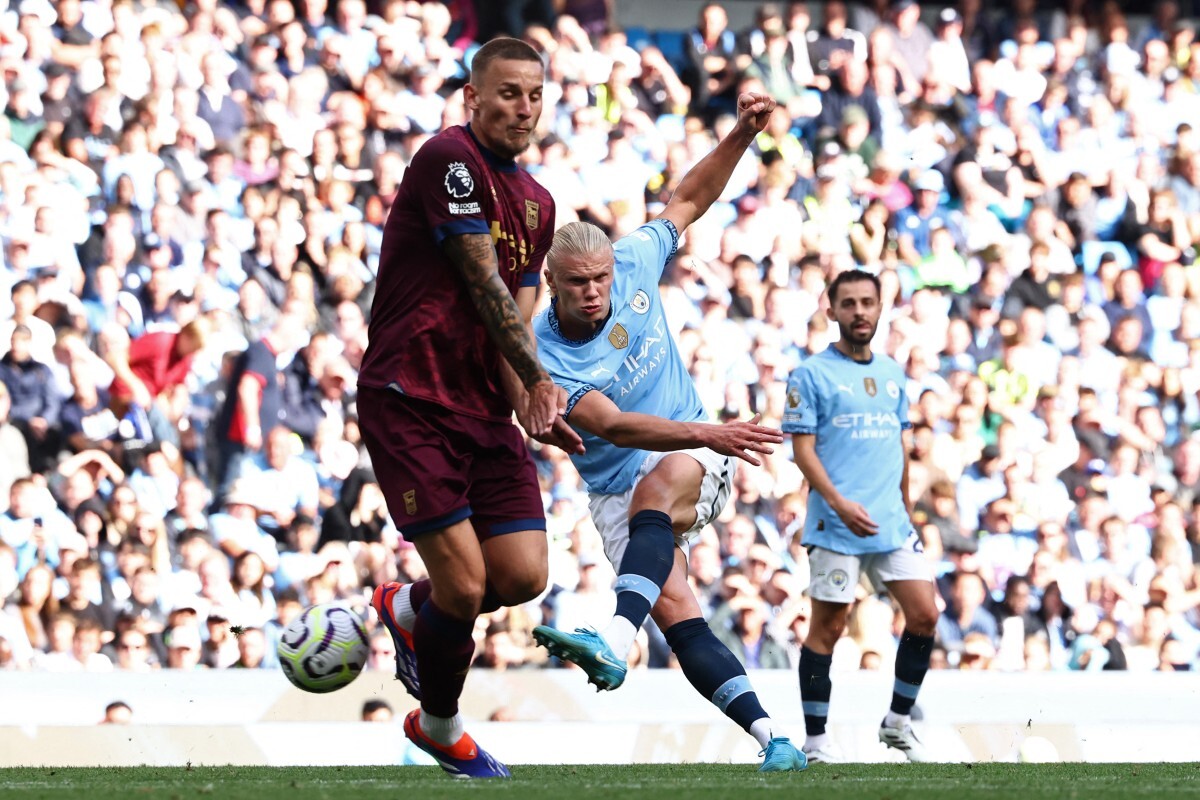 |
Haaland scores in Man City's 4-1 win over Ipswich in the second round of the Premier League at Etihad Stadium on 24/8. Photo: AFP |
Haaland scores in Man City's 4-1 win over Ipswich in the second round of the Premier League at Etihad Stadium on 24/8. Photo: AFP
Leif Smerud, who worked with Haaland, Strand Larsen, and Sorloth for 9 years with Norway's U21s, sees a "Pep Guardiola-ization" in English youth development. Coaches, believing they're emulating the Spaniard—ironically, the manager of Haaland—force young players into tactical frameworks, positional play, and possession-based football. This stifles instincts, and what stronger instinct does a child have than to get the ball and score?
Smerud, also a sports psychologist and performance consultant, said, "Someone told me that when we grew up, football was a way to do something besides school, but now football is school. You see the constraints in some young players. But for peak performance, it has to come from a genuine place, and with strikers, it has to be instinct and intuition".
He believes Scandinavian academies are better at preserving these elements. "In Norway, young players stay in community football longer. There are rules keeping them at their original clubs and in their area longer," Smerud explained.
The Norwegian Football Federation plays a more significant role than its English counterpart, overseeing development. Smerud noted a difference he observed while coaching Crystal Palace Women for three months: the coaching. He found English coaches impressive on the pitch but overly focused on structured tactical models.
"This model-based coaching is very directive: you do this, then that, move here, then there, creating players who are always thinking and trying to do the right thing, rather than reacting to the situation. In Scandinavia, we focus on a more free-flowing game. We might lack technical skills at the grassroots level, but players naturally have more freedom to choose," Smerud observed.
Strikers need that to thrive. See a chance, take a shot. Haaland, for example, doesn't overthink and showcases natural physicality and power, raw materials that Scandinavia excels at producing in its number 9s.
Smerud added, "Actually, a few years ago, before Erling came along, we were struggling to develop strikers and center-backs. For a while, national youth team training sessions didn’t involve goalposts because the physical trainers thought using them was a risk for injury. Our sessions became too focused on possession, and for a while, we were only bringing small midfielders to national team camps. That was a mistake".
Smerud, who gave Haaland and Strand Larsen their U21 debuts, helped change this thinking.
Sweden has a different system than Norway, but a similar genesis is seen in Isak and Gyokeres’ journeys. Like Haaland developing at small local club Bryne, where he was encouraged to find his own game—and Strand Larsen similarly at Kvik Halden—Gyokeres started at tiny suburban IFK Aspudden-Tellus.
All three progressed in small steps: Haaland via Molde, Strand Larsen via Sarpsborg, Gyokeres via Brommapojkarna. Development is central to Brommapojkarna, which produced Tottenham's Dejan Kulusevski and Lucas Bergvall. Their sporting director, Philip Berglund, emphasized, "It’s important that we encourage young players to play spontaneously and simply play, rather than just having rigid football training".
Gyokeres’ father, Stefan, his coach at Aspudden, said that as a child, he was "never pushed with anything other than ‘just have fun’".
AIK is a bigger club, and Isak was in their system from age six. AIK's academy director, Peter Wennberg, said, "We work with street footballers, free players". Isak’s individuality was nurtured, and coaches were once puzzled by disappearing balls from storage. They were delighted to discover Isak and his friends were "stealing" them for extra night practices.
In Sweden, Isak is often compared to Zlatan Ibrahimovic, and Ibrahimovic is Gyokeres’ idol. Zlatan’s cultural impact permeates Scandinavia and is another factor in the striker production line.
At first glance, the flamboyant energy of Haaland, Isak, Gyokeres, even Strand Larsen, seems to contradict Scandinavia’s modesty and egalitarianism. The "Law of Jante" describes the region’s traditional equality, the first rule stating: you’re not to think you are anything special.
However, Smerud said, "Zlatan’s impact is huge. I know he’s a big inspiration for Erling, and I even call Strand Larsen, who was my captain and played for me for years, ‘Stratan’. Zlatan is a bit un-Scandinavian, more confident, outgoing, eccentric—that goes against Janteloven. But he has a work ethic, professionalism, and is a good teammate, which are very Janteloven. So, Zlatan has helped the younger generation find their way".
Another witness is Ian Burchnall, who coached successfully in Norway and Sweden before managing Notts County, Forest Green Rovers, and assisting Gary O’Neil at Wolves. He believes young Scandinavian players are "less coached and more instinctive". He added, "Artificial pitches are everywhere. There’s probably more of a built-in street football environment".
Burchnall points to a common Scandinavian striker development path. They play in their domestic top flights at 16 or 17, then progress through stepping-stone clubs: Haaland (Salzburg and Dortmund), Isak (Dortmund, Willem II, Real Sociedad), Gyokeres (Brighton, Coventry City, Sporting), Strand Larsen (Groningen, Celta Vigo).
He explained, "In England, even in League One or Two, you can play nearly 60 games a season, whereas the Norwegian league has only 30 games with a full week between matches to work on the training ground, and Sweden is similar. These leagues are very technical, perfect for young players. They get game time and have time to train and prepare".
Burchnall believes patience benefits strikers, the hardest position to break through at big clubs: "I find Scandinavian players very intelligent, and they think about their careers. They make the right steps from a young age and don’t rush to the top".
Bryan King believes there’s more untapped Scandinavian talent, if the Premier League looks. He recounts how his late friend Tommy Moller Nielsen offered Haaland, Isak, and Mohammed Kudus—the Ghanaian who started at Denmark’s Nordsjaelland—to Man Utd when he was their Scandinavian scout.
"Man Utd could have had all three for about 10 million USD. Isak was at AIK, but they thought he was too skinny. Tottenham also rejected him. English clubs were asleep in Scandinavia," King said. But now, the football world has awakened to the strikers from the cold.
Hoang Thong (according to The Times)



